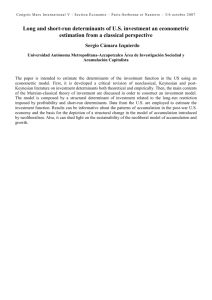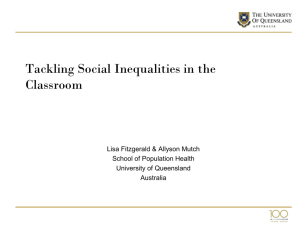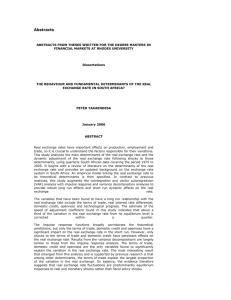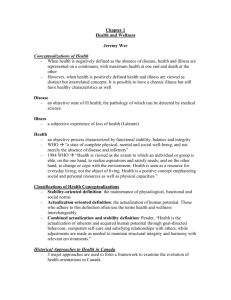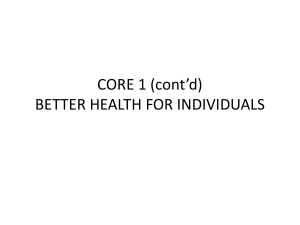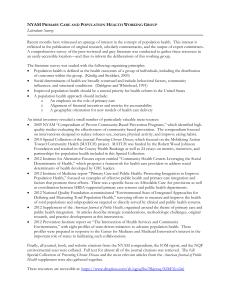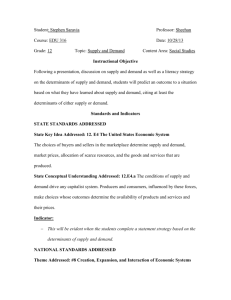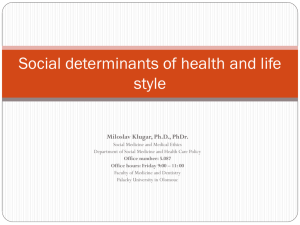Social Determinants of Health
advertisement
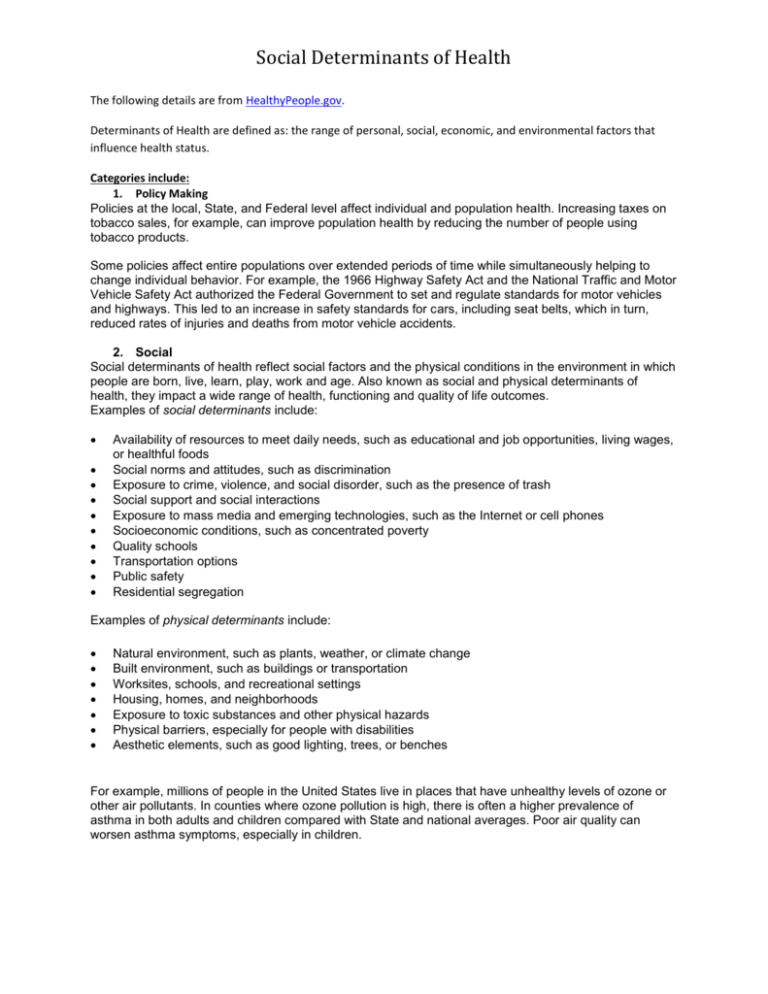
Social Determinants of Health The following details are from HealthyPeople.gov. Determinants of Health are defined as: the range of personal, social, economic, and environmental factors that influence health status. Categories include: 1. Policy Making Policies at the local, State, and Federal level affect individual and population health. Increasing taxes on tobacco sales, for example, can improve population health by reducing the number of people using tobacco products. Some policies affect entire populations over extended periods of time while simultaneously helping to change individual behavior. For example, the 1966 Highway Safety Act and the National Traffic and Motor Vehicle Safety Act authorized the Federal Government to set and regulate standards for motor vehicles and highways. This led to an increase in safety standards for cars, including seat belts, which in turn, reduced rates of injuries and deaths from motor vehicle accidents. 2. Social Social determinants of health reflect social factors and the physical conditions in the environment in which people are born, live, learn, play, work and age. Also known as social and physical determinants of health, they impact a wide range of health, functioning and quality of life outcomes. Examples of social determinants include: Availability of resources to meet daily needs, such as educational and job opportunities, living wages, or healthful foods Social norms and attitudes, such as discrimination Exposure to crime, violence, and social disorder, such as the presence of trash Social support and social interactions Exposure to mass media and emerging technologies, such as the Internet or cell phones Socioeconomic conditions, such as concentrated poverty Quality schools Transportation options Public safety Residential segregation Examples of physical determinants include: Natural environment, such as plants, weather, or climate change Built environment, such as buildings or transportation Worksites, schools, and recreational settings Housing, homes, and neighborhoods Exposure to toxic substances and other physical hazards Physical barriers, especially for people with disabilities Aesthetic elements, such as good lighting, trees, or benches For example, millions of people in the United States live in places that have unhealthy levels of ozone or other air pollutants. In counties where ozone pollution is high, there is often a higher prevalence of asthma in both adults and children compared with State and national averages. Poor air quality can worsen asthma symptoms, especially in children. Social Determinants of Health 3. Health Services Both access to health services and the quality of health services can impact health. Healthy People 2020 directly addresses access to health services as a topic area and incorporates quality of health services throughout a number of topic areas. Lack of access, or limited access, to health services greatly impacts an individual’s health status. For example, when individuals do not have health insurance, they are less likely to participate in preventive care and are more likely to delay medical treatment. Barriers to accessing health services include: Lack of availability High cost Lack of insurance coverage Limited language access These barriers to accessing health services lead to: Unmet health needs Delays in receiving appropriate care Inability to get preventive services Hospitalizations that could have been prevented 4. Individual Behavior Individual behavior also plays a role in health outcomes. For example, if an individual quits smoking, his or her risk of developing heart disease is greatly reduced. Many public health and health care interventions focus on changing individual behaviors such as substance abuse, diet, and physical activity. Positive changes in individual behavior can reduce the rates of chronic disease in this country. Examples of individual behavior determinants of health include: Diet Physical activity Alcohol, cigarette, and other drug use Hand washing 5. Biology and Genetics Some biological and genetic factors affect specific populations more than others. For example, older adults are biologically prone to being in poorer health than adolescents due to the physical and cognitive effects of aging. Sickle cell disease is a common example of a genetic determinant of health. Sickle cell is a condition that people inherit when both parents carry the gene for sickle cell. The gene is most common in people with ancestors from West African countries, Mediterranean countries, South or Central American countries, Caribbean islands, India, and Saudi Arabia. Examples of biological and genetic social determinants of health include: Age Sex HIV status Inherited conditions, such as sickle-cell anemia, hemophilia, and cystic fibrosis Carrying the BRCA1 or BRCA2 gene, which increases risk for breast and ovarian cancer Family history of heart disease
